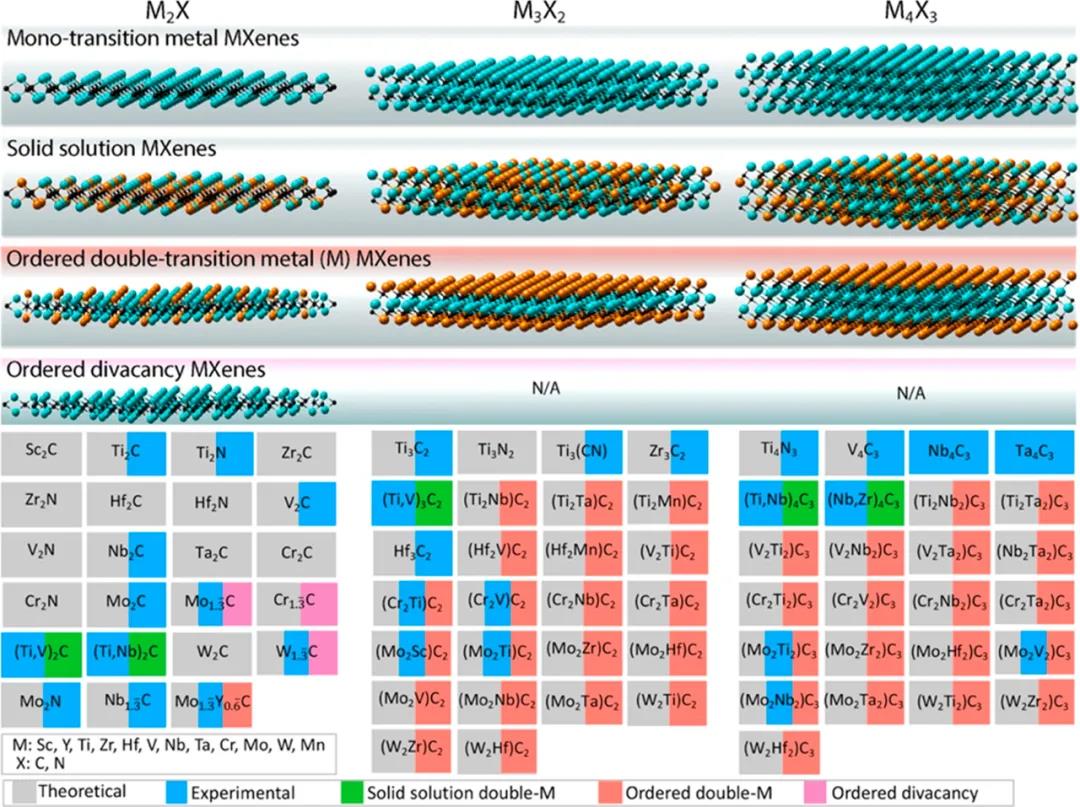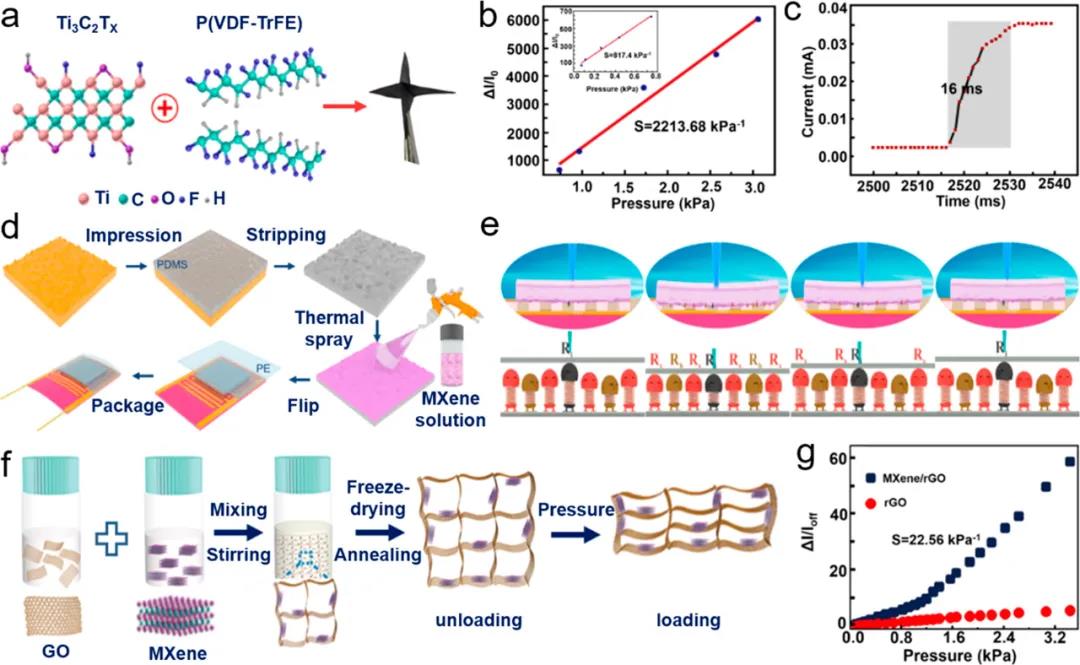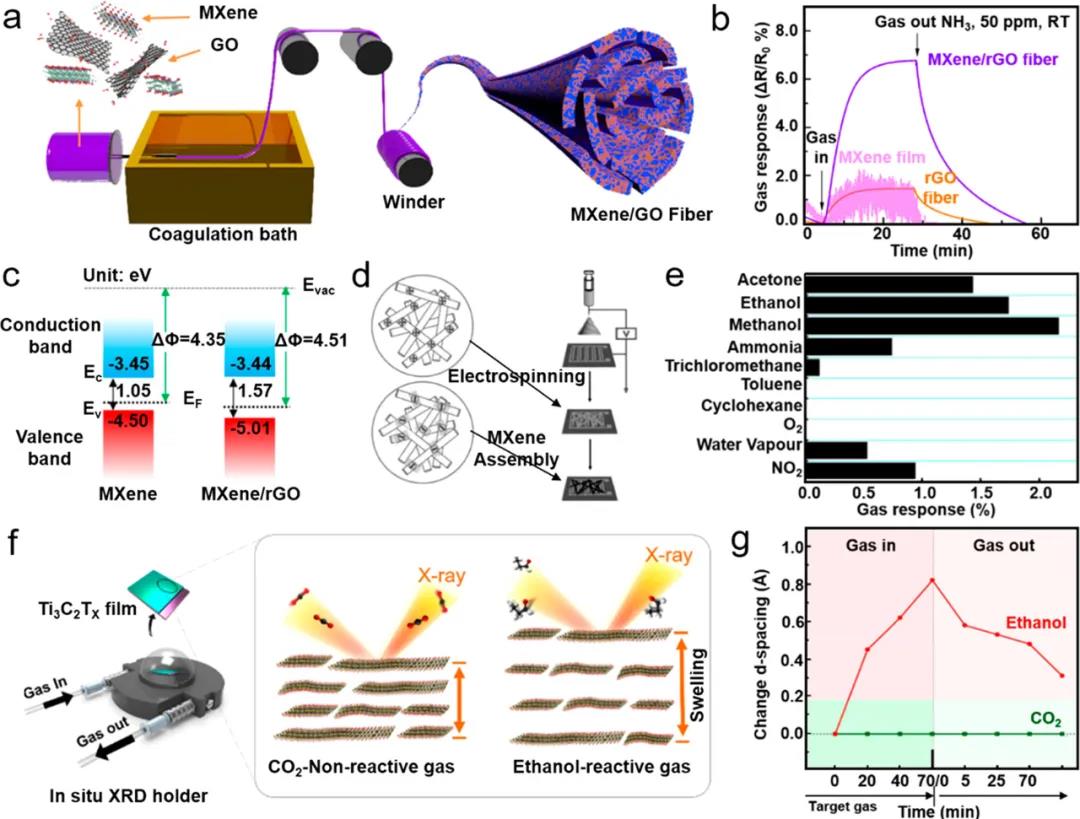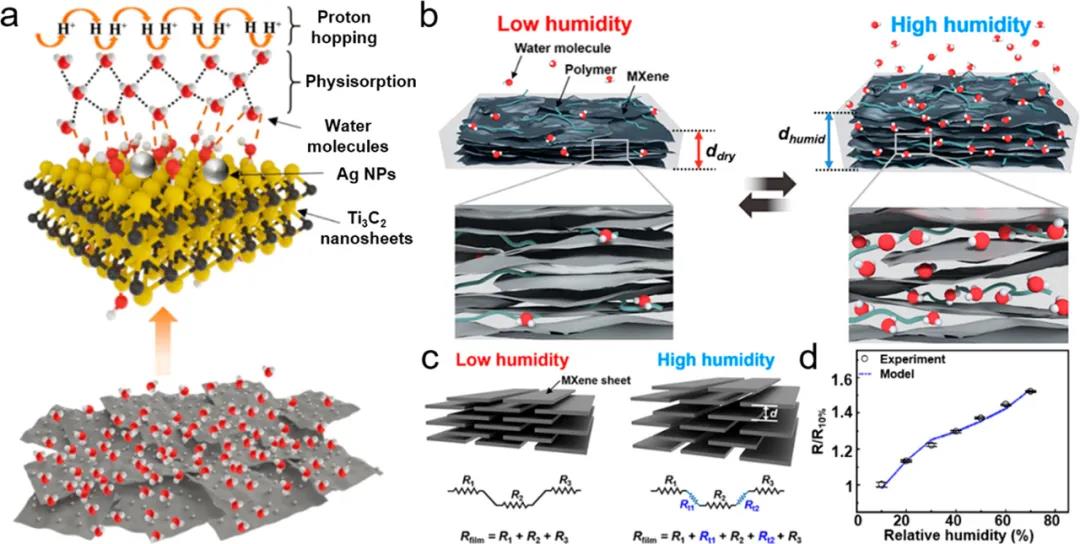With the rapid development of electronic information technologies such as the Internet of Things, wearable electronics, home automation, and smart industry, sensors are playing an increasingly important role in peoples daily lives. There is no doubt that the performance of the sensor mainly depends on the sensing material. Among all possible candidate materials, layered nanomaterials with a two-dimensional (2D) planar structure have many properties better than bulk materials, and are suitable for constructing various high-performance sensors. As a new 2D material, MXenes has the advantages of adjustable surface properties, adjustable band gap, and high mechanical strength. It has a wide range of application prospects in various application fields.
Recently, Academician Huang Wei of Northwestern Polytechnical University and Sun Gengzhi started with the preparation of MXene nanosheets, summarized the latest developments in Mxene-based sensors, and focused on their potential sensing mechanisms, providing guidance for the future design of high-performance sensor devices.

Preparation
The current common strategy for preparing MXene nanosheets is to etch from the MAX phase (Mn+1AXn) from top to bottom. Generally speaking, the M−A bond is considered to be metallic, while the M−X bond has multiple characteristics of ions, metals, and covalents. Therefore, contrary to the exfoliation of graphene, the M−A bond is difficult to break by mechanical shear. However, it is feasible by selective etching. The preparation of MXenes usually includes two steps, namely the selective etching of A and the delamination of MXenes.

Physical and chemical properties
Generally, the performance of MXene mainly depends on its composition, stacking order and lateral size. When removing Al atoms from the MAX phase (such as Ti3AlC2), Ti atoms are exposed on both sides of the Ti3C2 layer. These unstable Ti atoms tend to connect with TX (for example, -F, -OH, and =0) generated during etching in an aqueous solution, thereby reducing the total surface energy. The author summarized the physical and chemical properties of MXenes (thermal/chemical stability, mechanical properties, optical properties, and electrical properties).

Application progress
The author summarized the application progress of Mxenes-based sensors, including:
1) Strain/stress sensor (the advantages of MXene include high conductivity, excellent flexibility and good hydrophilicity (suitable for wet processing), making it a potential application prospect in strain/stress sensors);
2) Gas sensor (Thanks to its 2D layered structure and adjustable surface end groups, MXene is considered to be an ideal platform for the development of gas sensors);
3) Electrochemical sensor (MXenes, as a typical 2D material, has biocompatibility, large specific surface area, rich surface chemical properties, adjustable lateral size, good electrical conductivity and mechanical strength, so that it can interact with target species Effective and selective interaction);
4) Optical sensor (because MXene has a tunable electronic structure that depends on the number of layers and surface functional groups, it exhibits unique nonlinear optical characteristics and can withstand much higher laser radiation power than graphene);
5) Humidity sensor (MXene has the advantages of high conductivity, good hydrophilicity and abundant surface terminals (such as -F a d d -OH)).

There are still challenges
The author finally pointed out that although MXene is considered a universal 2D material and has achieved remarkable results, there are still challenges in using MXene for sensor applications. include:
1) It is not yet possible to synthesize Mxene-based sensing materials in a controllable manner;
2) It is necessary to further reveal the nature of the interface between MXene nanosheets and other substances (such as surface functional groups, gas molecules, water molecules and hybrid phases);
3) Interference from different signals (for example, humidity, gas, temperature and strain) will cause inaccurate measurement results;
4) Special attention should be paid to the chemical and thermal stability of MXene nanosheets, especially in humid environments with oxygen and high temperatures.

references
Yangyang Pei, et al, Ti3C2TX MXene for Sensing Applications: Recent Progress, Design Principles, and Future Perspectives, ACS Nano, 2021
DOI: 10.1021/acsnano.1c00248
https://dx.doi.org/10.1021/acsnano.1c00248








